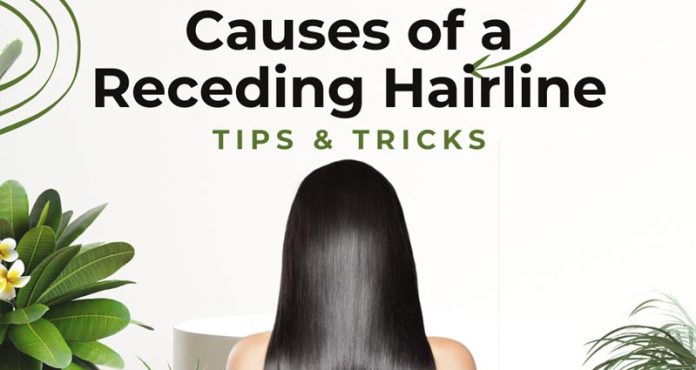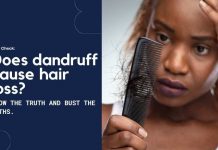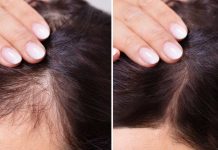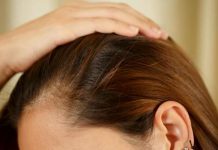Hair loss is a frequent problem that both men and women face. Male pattern baldness, also known as receding hairline, is characterized by progressive hair loss from the front and sides of the head. It usually begins in the temples and spreads to the crown, forming a bald patch.
This issue is more common in men and tends to worsen with age. According to statistics, at least 20% of men have noticeable hair loss in their twenties, 25% in their thirties, and 50% begin to see thinning hair as they age.
Once a hairline recession has begun, it isn’t easy to reverse. If you’re experiencing hair loss, you should know that an increasing variety of therapies, treatments, and at-home cures are available to help you keep your hair healthy and whole.
Why is a receding hairline most common in men?
Androgenic alopecia, often known as male-pattern baldness, is a hair loss that affects males more than women. Androgen hormones, such as dihydrotestosterone (DHT), created as a by-product of testosterone, cause the illness. DHT may decrease hair follicles, resulting in hair loss and baldness.
What are the signs and symptoms of a receding hairline?
A receding hairline is a condition in which the front of your hairline seems taller than the sides. Genetics are mainly at blame, although stress, sickness, or hormone imbalances can also play a role. There are specific symptoms and indicators to look for if you have a receding hairline.
- Hair thinning begins in the front of the head, commonly at the temples and crown, and progresses over time.
- A hairline recession occurs when the hairline begins to recede backward, away from the brow, producing an M-shaped pattern.
- Bald patches: Bald patches on the top and front of the scalp can result from a receding hairline.
- Women with receding hairlines may notice a widening of their hair part and diminished hair density in the middle of the scalp.
- Hair shedding: More hair falls out than normal, most commonly in the shower, on pillows, or on hair brushes.
What are the causes of receding hairline?
- Family history: A receding hairline is more likely if you have a family history ( genetically susceptible individuals) of hair loss.
- Hormonal changes: Hormones changes, such as those seen during puberty, pregnancy, or menopause, can result in temporary hair loss, including a receding hairline.
- Age: Men’s hairlines can naturally recede as they age, owing to hormone levels and heredity changes.
- Health conditions: Medical diseases, such as autoimmune illnesses, thyroid abnormalities, and scalp infections, can all cause hair loss and a receding hairline.
- Medication: Medicines, such as chemotherapy treatments, blood thinners, and antidepressants, can cause hair loss and a receding hairline.
- Hairstyles: Tightly twisted hairstyles like braids, cornrows, and ponytails can cause hair loss and a receding hairline over time.
- Inadequate nutrition: Deficiencies in specific vitamins and minerals, such as calcium, are examples of nutritional inadequacies which can lead to receding hairline.
Treatments for a receding hairline
Finding the source of your receding hairline and choosing the best course of therapy can be aided by a good diagnosis by a qualified dermatologist.
1. Medication
- Minoxidil is a topical medicine that can enhance hair growth by boosting blood flow to the hair follicles.
- Finasteride is an oral drug that prevents the synthesis of DHT, a hormone that can cause hair follicle shrinkage and loss.
- Dutasteride is another oral drug that blocks DHT production. It promotes hair renewal and repair.
2. Platelet-Rich Plasma (PRP)
PRP therapy is one approach for treating a receding hairline. This includes injecting concentrated platelets from the patient’s blood into the scalp, stimulating hair follicles, and increasing hair growth. The method is highly effective in androgenetic alopecia and female pattern hair loss. As per a study it was found that it is also effective in few types of cicatricial alopecia.
3. Hair transplantation
Hair transplantation is a surgical technique in which grafts of hair-bearing skin from one section of your head are transferred to another area where your hair is thinning or missing entirely. This treatment can be performed on any portion of the scalp. However, it is usually performed on the front edge (temporal fringe) or top of the head (vertex).
4. Scalp micro pigmentation
Scalp micro-pigmentation is a non-surgical hairline treatment that includes tattooing microscopic dots on the scalp to mimic the appearance of hair follicles, providing a shaved head or thicker hair appearance. Since this is a cosmetic tattoo, the results highly depend upon the skills of the person doing the procedure. The procedure’s safety could be enhanced by getting it done under the supervision of a physician than in a parlor.
Prevention of a receding hairline
- Have a good night’s sleep every night. Sleep aids in the restoration of your body and the maintenance of a healthy immune system.
- Poor diet is one of the leading reasons for hair loss. Vitamins and minerals in a well-balanced diet will help your hair stay healthy and avoid breakage.
- Work out regularly to increase your energy levels, enhance your mood, and make you feel more confident in yourself (and your hair).
- Stress should be avoided as much as possible since it can lower testosterone levels, contributing to hair loss.
- Sleeping with your hair protected might also help lessen the impacts of hair loss. Choose a silk or satin pillowcase because it creates less friction, allowing your hair to flow across the pillow rather than being pushed across, as cotton pillow covers do.
Conclusion
While it may not be fashionable to acknowledge it, hair loss affects around 85% of men at some time in their life. A good number of women too!
While it’s tempting to focus on the most severe types of hair loss, such as male pattern baldness or alopecia, many people suffer from thinning hair or receding hairlines as they age. While it may be humiliating, you must not live with this condition. That’s why we’ll look at how to prevent and manage hair loss, so you may learn more about it and feel better about yourself and your external appearance again.
At Kolors Healthcare, we have a team of professionals who can provide the most up-to-date treatments for receding hairlines. They encourage hair growth and restore the hairline using cutting-edge techniques ranging from topical medication and PRP therapy to hair transplantation. To locate the nearest Kolors Healthcare facility and schedule an appointment at a time and date that is convenient for you, visit their website or contact their customer service number now.
Receding Hairline FAQs
Is it OK to have a receding hairline with age?
Indeed, a receding hairline with age is entirely typical since it is a natural component of aging. By age 35, it is anticipated that almost two-thirds of males will have experienced some degree of hair loss. But, if you are concerned about your receding hairline or significant hair loss, you should contact a healthcare practitioner to rule out any underlying health concerns.
What is an M-shaped hairline?
An M-shaped hairline is a receding hairline that resembles the letter M, with the hairline receding much more near the temples. This is a frequent male hair loss pattern.
What age does the hairline start receding?
Hairline recession can occur at any age, although men in their 30s and 40s are more likely to experience it. Yet, some guys may feel it sooner or later.
Can women regrow hair on a receded hairline?
Treatment for a receding hairline might include a combination of clinically validated hair loss treatments and natural alternatives. To properly restore your hairline, selecting the best treatment strategy according to your needs and preferences is vital.
Does biotin help in treating a receding hairline?
Biotin’s efficacy in encouraging hair regeneration depends on whether a person is clinically low in biotin. While biotin can promote hair development in deficient people, there is no proof that it enhances hair growth in those who are not.









